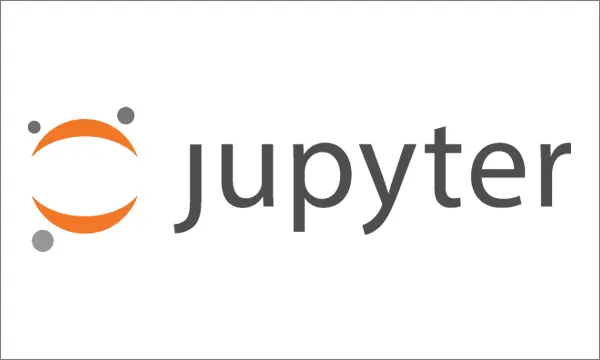- About
- Network
- Community
- Initiatives
- News
- Events
- Blog
- Publications

CENIC provides cost-effective, high-bandwidth networking to support our community members — responding to the needs of their faculties, staff, students, and associated research groups — and to facilitate excellence in scientific, education, government, and private sector collaboration and innovation.
CENIC provides a full suite of network services over the California Research and Education Network (CalREN), a high-capacity network with more than 8,000 miles of optical fiber. Download a PDF of the CENIC Service Catalog here >
Digital California (DC) Service
The Digital California service provides routed access to CalREN members, commodity peers, on-net cache resources, commercial ISP, and R&E transit.
Digital California (DC) Service Technical Features & Benefits:
- Network backbone engineered with abundant bandwidth and optimized for performance. Capable of handling the most demanding traffic patterns, Minimizing dropped packets, jitter, and other underperformance characteristics of commodity networks.
- High-performance, low-latency direct access to cloud providers such as AWS, Google, and Azure, partner networks including Internet2, Pacific Wave, and Western Regional Network, and other online services such as Netflix, Twitch, and Akamai.
- Highly reliable & cost-effective member connections.
- Direct access at 18 hub sites and various backhaul options to reach additional locations.
- Supports IPv4/IPv6 dual-stack and jumbo frames.
- Supports the full BGP internet routing table and static routing on member connections.
- Access to CENIC's DNS resolvers.
- Highly reliable connections to other research and education entities.
Add-On Services:
AT&T Hosted Voice Solution (HVS)
CENIC has partnered with AT&T to provide the AT&T Hosted Voice-over-IP Solution (HVS) to our community. CENIC ensures that VoIP traffic is taking the shortest path from campus to AT&T by leveraging two direct peering links with AT&T while honoring Quality of Service markings set by campus.
AT&T HVS includes two types of services for CENIC associates:
- SIP trunking - A service that delivers integrated access for IP PBX, TDM PBX, or Key System environments, providing potential total cost benefits through the consolidation of voice and data – one provider, single transport, and management options.
- End station - All phones connect to a PBX in the cloud, instead of connecting to a local PBX, and having that PBX connect to the cloud as with SIP trunking.
Additionally, AT&T HVS services consist of:
- Server-side equipment - Supported by Mitel, AT&T’s partner, this equipment is located in Dallas, TX, and Atlanta, GA and consists of two redundant BroadSoft soft switches, which accept calls and route them appropriately using the SIP protocol.
- Client-side equipment - CENIC refers associates to work directly with Mitel. Mitel This equipment is located locally onsite and includes SIP phones and session border controllers.
- Network connectivity - Supported by CENIC up to CENIC’s network boundary or demarcation point.
Internet2 DDoS Mitigation Service (DMS)
An on-demand, cloud-based DDoS Mitigation Service (DMS) is available to CENIC members.
An on-demand, cloud-based DDoS Mitigation Service (DMS) is available to CENIC members. Two service options are available to CENIC members: The self-service solution has direct interaction with Radware for mitigation while members who opt for the managed-service solution use CENIC's expertise and advanced tools to detect and handle mitigation with Radware on their behalf. Additional information is available at Internet2’s DMS service description.
High-Performance Research (HPR) Service
The High-Performance Research (HPR) service provides routed access to CalREN research and education participants, including other R&E transit customers, Internet2 R&E, ESnet, and Pacific Wave participants, and DC members.
HPR Service Technical Features & Benefits:
- Network backbone engineered with abundant bandwidth and optimized for performance. Minimizing dropped packets, jitter, and other underperformance characteristics of commodity networks.
- High-performance, low-latency, direct access to regional, national, and international research and education networks.
- Optimized for R&E traffic and data-intensive research applications.
- Direct access at six hub sites and various backhaul options to reach additional locations.
- Supports IPv4/IPv6 dual-stack and jumbo frames.
Add-On Services:
Large Hadron Collider Open Network Environment (LHCONE)
The Large Hadron Collider Open Network Environment allows CENIC HPR members to connect to private LHC research sites and a global infrastructure for high-energy physics data analysis. The LHCONE is a dedicated network architecture inter-connecting participating high-energy physics sites and allowing those sites to pool their computing resources for more efficient distribution, storage, processing and analysis of HEP data. An acceptable use policy ensures appropriate and secure scientific use of the overlay network and protects connected sites. See LHCONE’s TWiki for more information and eligibility requirements for becoming an LHCONE site.
Layer 2 Virtual Private Network Service - E-LINE
E-LINE is a private and seamless point-to-point Layer 2 service providing transparent connectivity between CENIC members and to cloud providers.
E-LINE Technical Features & Benefits:
- Layer 2 Ethernet over private MPLS backbone.
- Simple and efficient way to extend a LAN enterprise network.
- Support for VLAN-based and port-based options.
- Fast provisioning.
- Fully transparent to pass control packets.
Layer 2 Virtual Private Network Service - E-LAN
E-LAN is a private and seamless point-to-point or point-to-multipoint Layer 2 service providing transparent connectivity between CENIC members and to cloud providers.
E-LAN Technical Features & Benefits:
- Layer 2 Ethernet over private MPLS backbone.
- Simple and efficient way to extend a LAN Enterprise network.
- Support for VLAN-based and port-based options.
- Fast provisioning.
- Fully transparent to pass control packets.
Layer 3 Virtual Private Network Service - IP VPN
IP VPN is a private and unencrypted point-to-multipoint Layer 3 service providing a separate virtual network between CENIC members and to cloud providers.
IP VPN Technical Features & Benefits:
- Completely private network separate from your public internet connection.
- Support for point-to-point and point-to-multipoint options.
- Full control over IP prefix propagation.
- Layer 3 Ethernet service over private MPLS backbone.
Optical Services
Optical Point-to-Point Circuit A dedicated 10G or 100G point-to-point optical circuit, provisioned over acustomer-specific metro segment and/or a CENIC optical backbone.
Optical Service Technical Features & Benefits:
- Dedicated and private Layer 1 connections.
- Support for LR4 and SR4 client handoffs.
- Available bandwidth options: 10G and 100G.
Optical Spectrum Service
Optical Point-to-Point Circuit: A dedicated 10G or 100G point-to-point optical circuit, provisioned over a customer-specific metro segment and/or a CENIC optical backbone.
Optical Point-to-Point Circuit: A dedicated 10G or 100G point-to-point optical circuit, provisioned over a
customer-specific metro segment and/or a CENIC optical backbone.
Optical Spectrum Service Technical Features & Benefits:
- Dedicated and private Layer 1 connections.
- Available bandwidth options: 10G and 100G.
- Wavelength allocation is based on ITU Grid C-Band, 100 GHz spacing.
- Allows CENIC members to leverage the CalREN optical backbone and customer-specific metro segments while managing their own transponders or DWDM optics.
Peering Infrastructure
The benefits of exchange points have long been recognized within the R&E networking community. CENIC has established a robust peering fabric with immense fiscal and technical benefit to our members.
CENIC has more than 100 active peers with 183 connections, and interconnects with six peering exchanges: Pacific Wave, NYIIX LA, Equinix Los Angeles, Equinix San Jose, and Palo Alto (formerly referred to as PAIX). Most recently, a number of our settlement-free interconnections (SFIs) have been upgraded to 100 Gigabit Ethernet (GbE) or multiple 100 GbE. Through Pacific Wave, CENIC member institutions are able to connect to universities in regions throughout the Asia Pacific, including Japan, Korea, Singapore, China, Australia, New Zealand, Canada, Mexico, and South America
Beyond traditional peering, CENIC leverages use of content caches that began with Akamai and have expanded to include content from large providers such as Apple, Google, and Netflix, improving performance and decreasing off-net traffic. Similarly, CENIC engineers have worked with providers of major cloud-based services, such as Amazon, Google, Microsoft, and Oracle, to enhance peering connections for performance that provide CENIC members low-latency high-capacity direct access to cloud services.
The effectiveness of these efforts is illustrated by two data points. Firstly, although we’ve seen a dramatic rise in commodity traffic year over year for more than a decade, there has been no increase in usage of our ISP drains. Secondly, while the quantity of traffic traversing our ISP drains has remained constant, the percent of traffic traversing our ISP drains has decreased to 10% of total traffic. That is, 90% of our commodity traffic to and from CalREN now takes place through our peering infrastructure.
Internet2 Services
CENIC Members also have access to Internet2 services and applications, AL2S, Cloud Connect and RPI. InCommon and NET+ Services are available to some CENIC members via Internet2 membership and/or separate subscriptions. See the link below for Internet2 details: https://internet2.edu/services/.
Internet2 AL2S
Internet2’s Layer 2 Service delivers a strategic advantage for leaders in research and education by providing effective and efficient point-to-point Ethernet technology.
AL2S allows users to create their own VLANs on the Internet2 AL2S backbone. Static or Dynamic, point-to-point or multipoint, intra-domain or inter-domain, AL2S puts control of the backbone VLANs into the users’ hands for the creation of purpose-built private VLANs using infrastructure already in place.
Internet2 Cloud Connect
Extend your data center to the cloud with a dedicated network connection to AWS Direct Connect, GCP Partner Interconnect, Microsoft Azure ExpressRoute, and/or Oracle FastConnect using the combination of your regional network and the Internet2 high-speed national network. Five geographically diverse connection points ensure the best performance.
The Cloud Connect service provides institutions with a Cloud Connect Portal for researchers and campus IT staff to deploy shared direct connection infrastructure on their own with the ability to support private direct connections to AWS Direct Connect, Google Cloud Partner Interconnect, Microsoft Azure ExpressRoute, and/or Oracle FastConnect.
Internet2 RPI
RPI provides a low-cost option to regional networks that they can use for themselves or extend to their members. RPI allows dedicated, private, regional-controlled access to any vendor-provided services offered at any node on the network. This could serve as a primary connection or redundant connection to the service.
Internet2 InCommon & NET+ Services
Eduroam- Provide your faculty, students, and staff with seamless access to global roaming Wi-Fi. Eduroam users can open their laptops and be connected (at participating organizations) on any eduroam network worldwide.
DocuSign- Ensure your institution’s faculty, staff, and students can easily review and sign documents electronically. Internet2 NET+ collaboration with DocuSign provides the tools to eliminate paper and save time by streamlining and automating document signing and sending processes. Unlimited envelopes are included in the enterprise-wide subscription, which is a unique benefit of the NET+ program.
LastPass- LastPass is a password manager and single sign-on solution that makes it easy to log in to every web account while following best practices for password security. Through the custom-developed, affordable Internet2 NET+ LastPass packages, colleges and universities can offer school-sponsored password management to every person on campus.
For more information on Internet2 services: https://internet2.edu/services/service-catalog
Other
CENIC RPI & Experimental Service.
CENIC RPI
RPI service provides CENIC members with a dedicated private connection to external peers at select major peering points.
Technical Features & Benefits:
- Secure and dedicated connections.
- Support for 1G, 10G, and 100G.
- Leverages current investment in CENIC infrastructure.
- Allows CENIC members to connect directly to any commercial providers at major peering peering points.
- Meant to be combined with Layer 2 and Layer 3 VPN services.
Experimental Service (XD)
Experimental Service covers experimental and developmental connections that leverage bleeding-edge technologies for network and other research projects.
Blog posts about Technology & Innovation
CENIC and San Diego Supercomputer Center Create Sustainable Agriculture for California’s Future
CENIC’s networking and services, including CENIC AIR, can be a vital part of preparing new generations of farmers that will apply the latest technology to agriculture by turning the farm into an educational setting and improving the efficiency of farming as a career.
CENIC Members Enable Data-Driven Agriculture: Optimizing Harvests in a Changing Environment
The use of technology in agriculture to increase yield and decrease resources is the focus of an innovative project fueled by CENIC and its collaborative partners: a novel model of precision agriculture in the vineyards.
Explore the Future with Jupyter Notebooks and CENIC AIR
Jupyter notebooks are key tools for various research and data science tasks, such as exploratory data analysis (EDA) and scientific analysis, and educational uses. CENIC members are in an ideal position to use Jupyter Notebooks with the CENIC AI Resource (CENIC AIR).



